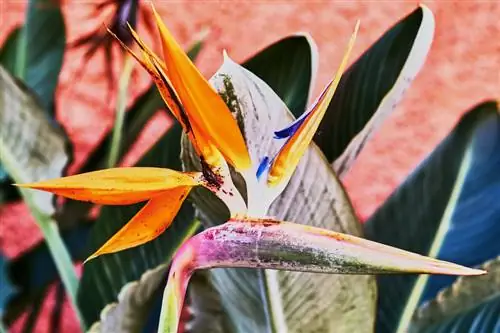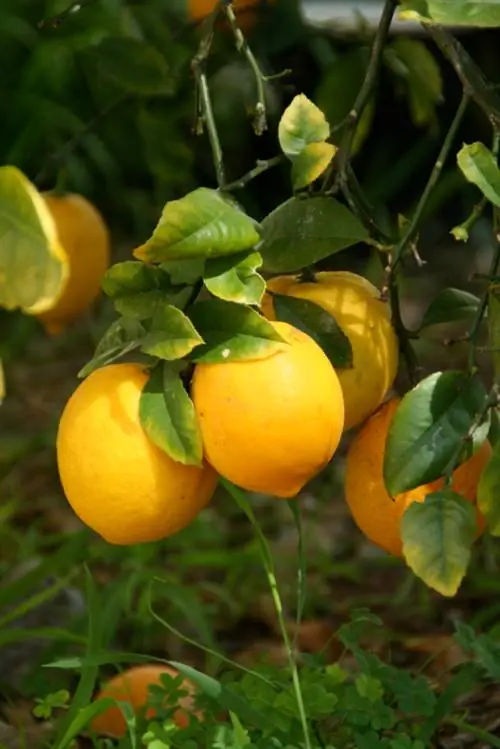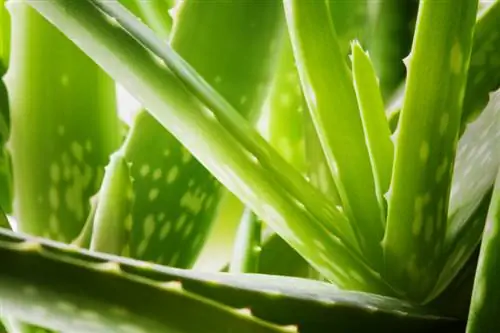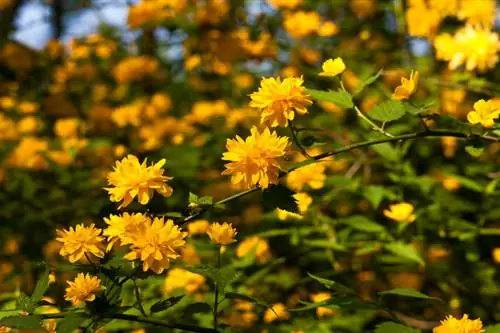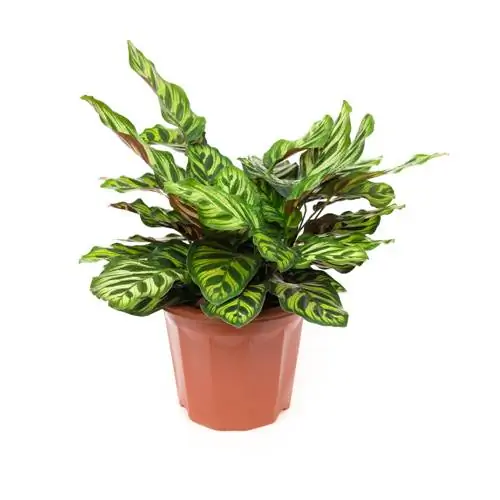- Author admin [email protected].
- Public 2023-12-16 16:46.
- Last modified 2025-06-01 06:02.
The leaves are brown and/or curled. The flowers do not open, but dry out when closed. Such symptoms do not always have to be due to care errors or an incorrect location. What diseases or pests affect Strelizia?

What diseases and pests affect strelicia and how can they be treated?
The most common diseases and pests of strelicia are root rot, which is caused by overwatering, and scale insects, which are visible on the leaves. Prevention and treatment include moderate watering, good drainage, a less heated room in winter, and if infested, removing the pests with a knife or toothbrush.
Diseases - of rarity
Strelizia is usually not susceptible to disease. Infestation can only occur if care is incorrect. For example, this plant is often watered too heavily. The soil is wet and root rot can occur after just a few days (recognizable by a putrid smell from the soil). This is a disease caused by a fungal pathogen.
Avoid root rot
Good drainage and regular but moderate watering prevent root rot. Only water the Strelizia when the top layer of soil has dried. If root rot has already occurred, everything is often too late. If necessary, repotting into fresh soil and removing rotten root parts can help.
Identifying and removing scale insects
You can recognize scale insects by their cap-shaped shields on the leaves. Sticky, shiny honeydew (their excretions) can often be seen in between. The pests suck the plants dry and over time the leaves turn brown. You can see these animals e.g. E.g. remove with a knife or a toothbrush.
Other causes of a damaged, miserable appearance
Not only diseases and pests can affect Strelizia. There can also be the following reasons if it no longer looks good:
- damaged roots
- Stress
- Draft
- wrong wintering
- drought
- improper repotting and dividing
- Overfertilization/nutrient deficiency
- too little space in the pot
- too shady location
- Heat
Tip
The parrot flower is at risk of pest infestation, especially in winter. This primarily favors the dry room air that is created by the heat from the heating system. It is therefore better to place the plant in a room that is not heated!

